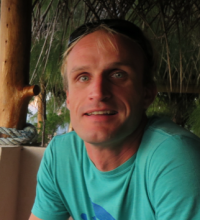The seaweed aquaculture industry is a growing area in California, and there is particular interest in the development of seaweed aquaculture for use in livestock feed, as incorporation of seaweed in cattle feed has been shown to reduce methane production in cattle digestion. The chemical compound that is thought to be primarily responsible for this effect is called bromoform. But, bromoform and other brominated gases are reactive gases that contribute to ozone depletion in the atmosphere. Before algae aquaculture is scaled up, it is therefore important to quantify the emissions and environmental impact of these gases.
The goal of this project is to explore the current and potential future impact of seaweed aquaculture in California on the natural flux of volatile bromocarbon gases to the atmosphere. The researchers will measure the production of bromoform and dibromomethane by seven different local species of seaweed, with a particular focus on species that may be mass produced to generate feed additives to reduce methane emissions from ruminant livestock. They also seek to reduce the uncertainty associated with traditional measurement techniques through the development of a novel tank incubation protocol mimicking long-line seaweed cultivation practices at the Moss Landing Marine Labs Aquaculture Facility.
The development of a truly sustainable Californian aquaculture industry requires consideration of all its potential impacts, including the potential emissions of ozone-damaging gases. The study results will be shared through academic publications and outreach to the California Aquaculture Association and the California Air Resources Board.
 Maxime Grand
Maxime Grand
 Luke Gardner
Luke Gardner